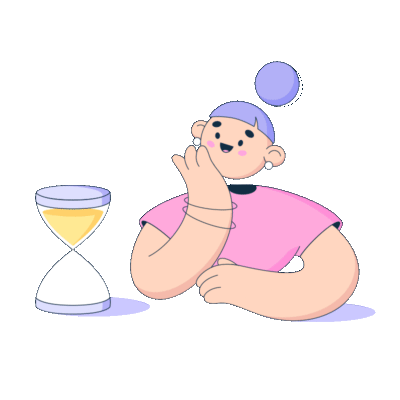
The fashion industry, renowned for its constant evolution, is witnessing a new revolution – one driven by artificial intelligence (AI).
Gone are the days of relying solely on intuition and experience. AI is weaving itself into the fabric of design, offering powerful tools and insights that are transforming the way we create and wear clothes.
But this isn’t a futuristic fantasy; it’s happening right now, and it’s reshaping the industry for both established brands and innovative startups.
So, how exactly is AI stitching itself into the seams of fashion design? Read on and discover the exciting possibilities.
FROM INSPIRATION TO INNOVATION – HOW AI ENHANCES CREATIVITY
Forget the stereotype of AI replacing artistic flair. Instead, think of it as a powerful collaborator, fueling inspiration and innovation throughout the design process. Here are just a few ways AI is transforming fashion:
- Trend Forecasting
Unlike trend forecasters who rely on intuition and experience, AI can analyze vast amounts of data, from social media trends and user interactions to purchasing patterns and economic indicators.
This allows brands like Tommy Hilfiger to collaborate with AI tools like IBM Watson to predict upcoming styles and color palettes with remarkable accuracy, resulting in a 16% increase in sales by catering to consumer preferences before they even emerge.
- Personalized Design
Say goodbye to “one-size-fits-all” fashion! AI can analyze body shapes, preferences and past purchases to generate unique garment recommendations for each customer.
This allows for mass customization, as seen with Zalando‘s AI-powered recommendations, leading to a 7% conversion rate increase and happier customers who feel their individual styles are truly understood.
- Digital Fabric Manipulation
Gone are the days of tedious hand-drawn sketches and expensive physical prototypes. AI-powered tools like Adobe CLO 3D can seamlessly manipulate textures, patterns, and colors on digital fabric models. This opens up endless experimentation for designers like Farfetch, who leverage AI to personalize website layouts and product suggestions, boosting engagement and sales.
Imagine visualizing how a fabric drapes on a specific body type or experimenting with bold color combinations – all within the click of a button.
- Virtual Prototyping
Ditch the costly and time-consuming physical prototypes! AI can create hyper-realistic 3D garment simulations, enabling designers to visualize and perfect their creations before production. This allows for faster design iterations and reduces waste, streamlining the design process significantly.
WHERE AI IS ALREADY STITCHING ITS MARK
The impact of AI isn’t just theoretical; it’s already transforming the fashion landscape :
- Tommy Hilfiger : As mentioned earlier, their collaboration with IBM Watson for trend forecasting resulted in a significant sales increase.
- Zalando : Their AI-powered recommendations led to a 7% conversion rate increase and happier customers.
- Farfetch : They leverage AI to personalize website layouts and product suggestions, boosting engagement and sales.
- Nike : They use AI for personalized product recommendations and size prediction, leading to increased customer satisfaction and reduced returns.
- Levi’s : They implemented AI-powered chatbots to handle customer service inquiries, improving efficiency and reducing workload.
BEYOND INSPIRATION – AI FOR EFFICIENT OPERATIONS
AI isn’t just about the creative side; it’s also a powerful tool for optimizing the business side of fashion :
- Supply Chain Optimization
AI can predict demand and optimize production cycles, minimizing waste and maximizing efficiency. Imagine accurately forecasting upcoming trends and tailoring production accordingly, leading to reduced costs and happier customers who receive their desired items on time.
- Fraud Detection
AI algorithms can detect fraudulent transactions with unmatched accuracy, protecting businesses from financial losses. This can be crucial for online retailers like Farfetch, ensuring a secure and trustworthy shopping experience for their customers.
- Customer Service Chatbots
AI-powered chatbots can answer customer queries 24/7, improving customer satisfaction and reducing workload for human customer service representatives. This allows brands like Levi’s to scale their support efficiently and offer consistent service around the clock.
So, is AI the Future of Fashion Design?
While AI won’t replace the human touch and artistry of a skilled designer, it’s undoubtedly a game-changer in the fashion industry. For entrepreneurs and startups, embracing AI isn’t a luxury; it’s a strategic necessity. It’s about weaving innovation, efficiency and personalization into the very fabric of your business.
At AI Officer, we understand the unique challenges and opportunities in the fashion industry. Our team of experts is here to help you seamlessly integrate AI into your business, offering a wide range of solutions.
Ready to Stitch Your Business into the Future of Fashion?
Contact our AI Officers today for a free consultation and discover how AI can help you design, create, and sell in ways never before imagined. Don’t wait; your competition might already be one step ahead!
Stay tuned for our upcoming blogs where we delve deeper into the world of AI and its impact on various industries.
Remember, AI Officer is your one-stop shop for customized AI solutions.





